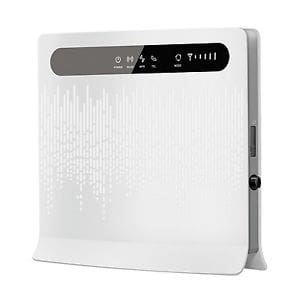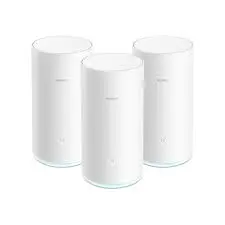Understanding WiFi Routers and Extenders: A Comprehensive Guide

Introduction
WiFi routers are the backbone of your home network. These devices connect to your modem and distribute internet signals to your wireless devices, such as smartphones, laptops, and smart home gadgets. A good WiFi router can handle multiple devices simultaneously, ensuring that everyone in your home can browse, stream, and game without interruptions. In this article, we will explore what is a wifi router, repeaters, some of the types of wifi routers, and factors to consider when choosing wifi routers.
Types of WiFi Router
Before we state the types of wifi routers, let’s explain what is a WIFI Router. A WiFi router is a pivotal device in modern connectivity, serving as the bridge between your modem and the multitude of internet-enabled devices within your home or office. It distributes the internet connection wirelessly, creating a local network that allows multiple devices to access the internet simultaneously. This capability is indispensable in today’s digital age, where various gadgets such as smartphones, tablets, laptops, and smart home devices demand reliable internet access.
WiFi routers come in various types, each designed to cater to specific needs and environments. Understanding the differences between these types can help users make informed decisions when selecting a router. The most common types of WiFi routers are:
1. Standard wireless router

These routers are typically used in homes and small offices, providing stable and broad coverage for everyday internet activities like browsing, streaming, and gaming. Popular brands such as Tenda, TP-Link, and Xiaomi offer a range of models with varying speeds and features, from basic to high-performance units equipped with advanced technologies like MU-MIMO and beamforming. Standard wireless routers typically operate on dual-band frequencies (2.4 GHz and 5 GHz) to reduce interference and maximize speed.
2. Mobile WiFi routers

They are also known as portable routers or sim card routers. These devices are compact, battery-powered, and designed for on-the-go connectivity. They create a local WiFi network by connecting to cellular networks such as Safaricom, airtel, etc, making them ideal for travelers and remote workers who need internet access in locations without traditional broadband connections. Brands like Huawei, Netgear, and TP-Link dominate this segment with versatile and user-friendly options.
3. Mesh routers

Mesh routers represent the latest evolution in WiFi technology. Unlike traditional routers, which rely on a single unit, mesh systems use multiple nodes that work together to blanket a large area with seamless WiFi coverage. This eliminates dead zones and ensures consistent performance throughout the premises. Mesh routers are particularly beneficial for users who require reliable connectivity in every corner of their property, making them suitable for modern smart homes and enterprises with extensive networking needs. Notable brands in this space include Google Nest, Eero, and Asus, each offering scalable solutions that can be easily expanded as needed.
What is a WiFi Extender and How Does It Work?
A WiFi extender, also known as a WiFi repeater, helps to expand the coverage of your existing network. If you have areas in your home where the WiFi signal is weak or nonexistent, a WiFi extender can bridge the gap, providing a stronger signal in those hard-to-reach places.This can be particularly beneficial in larger homes or offices where the WiFi signal may not reach every corner, leading to dead zones. But how do they work ?
The working principle of a WiFi extender is straightforward yet highly effective. The device is typically placed midway between the router and the areas with weak or no signal. Once positioned, the WiFi extender captures the existing signal from the router, boosts it, and then transmits the amplified signal to the desired locations. This process ensures that even the remotest parts of your home or office receive a strong and stable WiFi connection.
WiFi extenders are known for their ease of installation and setup. Most models from leading brands such as Xiomi, TP-Link, and Pix-Link come with user-friendly interfaces and step-by-step instructions. Typically, setting up a WiFi extender involves plugging it into a power outlet, connecting it to your existing WiFi network, and then positioning it in an optimal location.
Factors to Consider When Choosing a WiFi Router and Extender
Choosing the right WiFi router and extender can significantly enhance your network’s performance. When evaluating potential options, several key factors should be taken into account to ensure an optimal fit for your needs and environment. These factors include:
Size of your home or office – Larger spaces may require more robust solutions, such as WiFi repeaters or mesh systems, to ensure consistent coverage throughout.
Number of devices – The number of devices that will be connected to your network plays a crucial role in your choice. Modern households and offices can have numerous devices connected simultaneously, including smartphones, tablets, laptops, smart TVs, and IoT devices. Opting for a router with higher bandwidth capabilities and advanced features like dual or tri-band can help manage multiple connections more efficiently.
Internet speed – Another critical factor is the internet speed provided by your Internet Service Provider (ISP). Ensure that the WiFi router you select can support the maximum speed offered by your ISP. This will prevent bottlenecking and ensure you get the most out of your internet plan. Additionally, consider the latest WiFi standards; routers supporting WiFi 6 offer improved performance, lower latency, and better handling of multiple devices.
Features – Advanced features such as parental controls, guest networks, and Quality of Service (QoS) settings can also influence your decision. Parental controls allow you to manage and restrict internet access for children, while guest networks provide a separate network for visitors, enhancing security. QoS settings enable prioritization of bandwidth for critical applications, ensuring smoother performance for activities like streaming and online gaming.
Compatibility – When it comes to WiFi extenders, compatibility with your existing router is paramount. Ensure that the extender you choose can seamlessly integrate with your current setup. Ease of setup is another consideration; many extenders now offer plug-and-play capabilities, simplifying installation. Lastly, assess the coverage area of the extender to guarantee it meets your spatial requirements.
Conclusion
Understanding the functions and benefits of WiFi routers and extenders can significantly improve your home network experience. By choosing the right equipment and optimizing its placement, you can enjoy seamless connectivity throughout your home. Whether you’re streaming movies, working from home, or just browsing the web, a well-optimized network can make all the difference.
